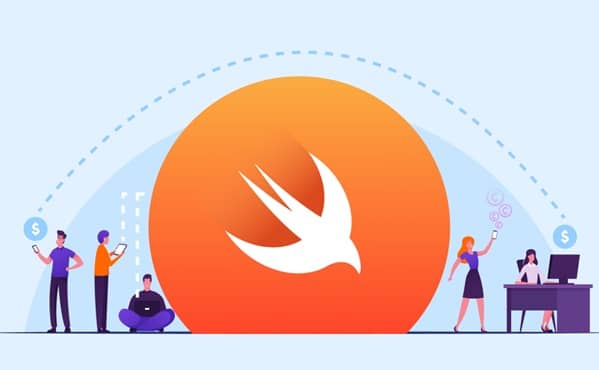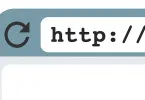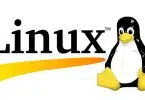A list of the top frequently asked Swift Interview Questions and answers are given below.
1) What is Swift? How is it different from Objective-C?
Swift and Objective-C both are used in iOS development but both are significantly different in terms of efficiency and usage.
- Swift is an open-source programming language developed by the Apple platform and expanded to build on Linus while Objective-C is not an open-source programming language and is limited to Apple.
- Swift syntax is easy, clear, and brief. It makes APIs easy to read and maintain while Objective-C is based on C language which is comparatively hard to use.
- Swift is more rational and precise which is why it has less code and is easy to learn while Objective-C code is lengthy double to Swift code.
- Swift can be compiled as a dynamic framework while Objective-C cannot be compiled into static libraries and dynamic frameworks.
2) What is the meaning of the question mark “?” in Swift?
In Swift, the question mark “?” is used in the property declaration. It tells the compiler that this property is optional. The property may hold a value or not. It avoids runtime errors when accessing that property by using ?. This is useful in optional chaining and a variant of this example is in conditional clauses.
For example:
|
1 2 3 4 |
var optionalName : String? = "John" if optionalName != nil { print("Your name is \(optionalName!)") } |
3) How can you make a property optional in Swift?
We have to declare a question mark ??’ in the code to make a property optional. If a property doesn’t have a value, then the symbol? helps to avoid the runtime error.
4) What are the Half Open Range operators in Swift?
Swift supports several types of operators. One of them is the Half Open Range operator. The half-open range operator specifies a range between two values a and b (a<b) where b is not included. It is known as a half-open range operator because it contains its first value only not the final value.
5) What are the functions of Swift?
Functions are the set of codes used to perform specific tasks. In Swift programming language, functions are used to pass local as well as global parameter values inside the function’s call.
In Swift4, functions can be categorized into two types:
- User Defined Functions
- Built-in Functions (Library Functions)
6) What is the Nested Function in Swift?
A function inside a function is called a nested function. Syntax:
|
1 2 3 4 5 6 |
func function1() { //statements of outer function func function2() { //statements of inner function } } |
7) Explain Enum in Swift.
Enum is also known as Swift Enumeration. Enum is a data type that contains a set of related values. It is declared in a class and its values are accessed through the instance members of that class. Syntax:
|
1 2 3 4 |
enum enum_name { // values are described here } |
8) What are Regular Expressions and Responder Chains in Swift?
Regular Expression: Regular expressions are the special string patterns that specify how to perform a search through a string.
Responder Chain: A Responder Chain is a hierarchy of objects that obtain the opportunity to respond to the events.
9) Explain the Dictionary in Swift.
Swift Dictionary is used to store the key-value pairs and access the value by using the key. It is just like hash tables in other programming languages.
10) How would you define variables and constants in Swift programming language?
You have to declare variables and constants before using it. Constants are declared by using the let keyword and variables by the var keyword. Example:
|
1 2 |
var javatpoint = "This is JavaTpoint" let fees = 10000 |
11) Explain the different features of Swift programming language.
Features of Swift programming language:
- Swift is very easy to learn and precise to use. It provides a safe programming approach.
- In Swift programming language, variables and constants must be initialized before use.
- Automatic memory management.
- Swift uses the “switch” function instead of the “if” statement for conditional programming.
- Swift follows Objective-C-like syntax.
- It checks Arrays and integers for overflow.
12) What type of literals does Swift language have?
A Swift literal is a direct value of a variable or a constant. It may be a number, character or string. Literals are used to initialize or assign value to variables or constants.
Different types of literals are:
- Binary Literals
- Octal Literals
- Hexadecimal Literals
- Decimal Literals
13) What is a floating point number in Swift? What are the different floating point numbers in Swift?
Numbers with decimal values or fractional components are called floating numbers. For example: 1.34 is a floating point number. Floating point types can represent a wider range of values than integer types. There are two signed floating point numbers:
Double: It represents a 64-bit floating point number. It is used when floating point values are very large.
Float: It represents a 32-bit floating point number. It is used when floating point values do not need 64-bit precision.
14) How can you write a comment in Swift?
In Swift programming language, single-line comments are started with double slashes (//).
For example:
- // This is a single-line comment.
Multi-line comment: Multiline comments start with a forward slash followed by an asterisk (/*) and end with an asterisk followed by a forward slash (*/).
For example:
- /* this is multi
- Line comment*/
15) What are the different control transfer statements used in Swift?
Swift language consists of the following Control transfer statements:
- Continue
- Break
- Fallthrough
- Return
16) What do you mean by Optional Chaining in Swift?
In Swift programming language, Optional Chaining is a process of querying and calling properties. You can chain multiple queries together, but if any link in the chain is nil then, the entire chain fails.
17) What is a lazy stored procedure in Swift and when is it used?
Lazy stored properties are used for a property whose initial values are not calculated until the first time it is used. A lazy stored property can be declared by writing the lazy modifier before its declaration. Lazy properties are useful when the initial value for a property is reliant on outside factors whose values are unknown.
18) What is the usage of switch statements in Swift language?
- Switch statements are used as a substitute for the long if-else-if statements.
- Switch statement supports any type of data, synchronizes them, and also checks for equality.
- The break is not required in the switch statement because there is no fall-through in the switch statement.
- The switch statement must have covered all possible values for your variable.
19) What is the use of break statements in Swift language?
The break statement is used within a loop where you have to immediately terminate a statement. It is also used to terminate a case in a switch statement.
20) What is the use of the continue statement in the Swift loop?
The continue statement is used in the Swift loop to change execution from its normal sequence. It stops the currently executing statement and starts again at the beginning of the next iteration through the loop.
21) What are the different collection types available in Swift?
There are two varieties of collection types in Swift:
- Array: In Swift, you can create an array of single types or an array of multiple types.
- Dictionary: In Swift, the dictionary is similar to a hash table in another programming language. You can store a key-value pair in a dictionary and access the value by using the key.
22) What is Inheritance in Swift?
Inheritance is a process in which a class can inherit properties, methods, and other characteristics from another class. Inheritance is supported in Swift programming language. There are two types of classes in Inheritance in Swift:
Subclass: The class that inherits the properties from another class is called a child class or subclass.
Superclass: The main class from where the subclass inherits the properties is known as the parent class or super class.






Leave a Comment